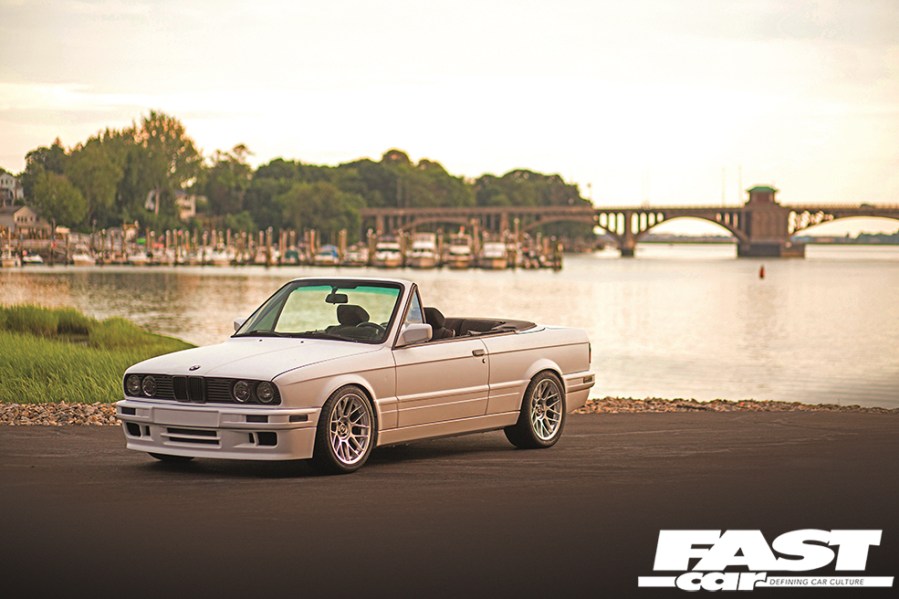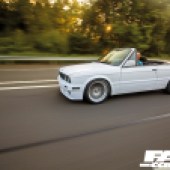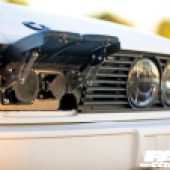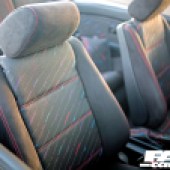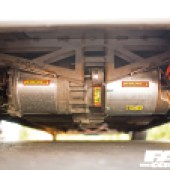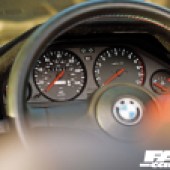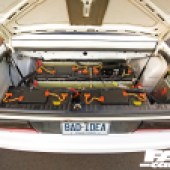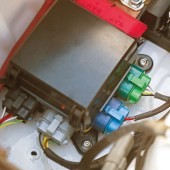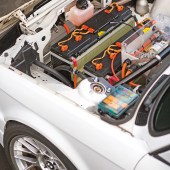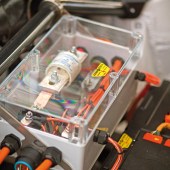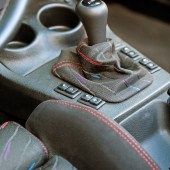This might look like a nicely modded E30 Cab – because it is – but beneath the surface sits an electric powertrain that catapults this Tesla-powered BMW E30 into the future.
Feature from Performance BMW. Words: Elizabeth de Latour. Photos: Zak DePiero.
The rise of the electric vehicle is inevitable and unstoppable and while that’s great for people who want cheap motoring, for people like us who are insanely passionate about cars it can feel like we’re battling against the current – literally. But, maybe, if we can make electric cars our own then we too can find a passion for them and Jon Volk (@tesla_bimmer) has done just that; in fact, he’s ahead of the curve because what he’s done is build himself a Tesla-powered BMW E30, and it’s not your average EV.
Why? That is the question. “I’ve had several E30s over the years and this one was my daily driver for the last six,” Jon begins. “In that time I’ve put around 120k miles on it, and for 30k of those, it was powered by a 4.8-litre Chevy LS with a cam and milled heads. Driving the car in Connecticut winters was taking its toll and I retired it from daily duties. I began thinking about what to do with it next and instead of doing the logical progression of throwing a turbo on this one as well, I stumbled across the fact that some people were doing Tesla swaps. They weren’t slow and they were having a ton of fun so I decided to jump in and give it a try. Major manufacturers are investing billions of dollars into EV development and I believe this will be the future. I wanted to figure out how to have fun with the new tech but keep with the classic look and feel of the car,” he says and the resulting machine does exactly that.
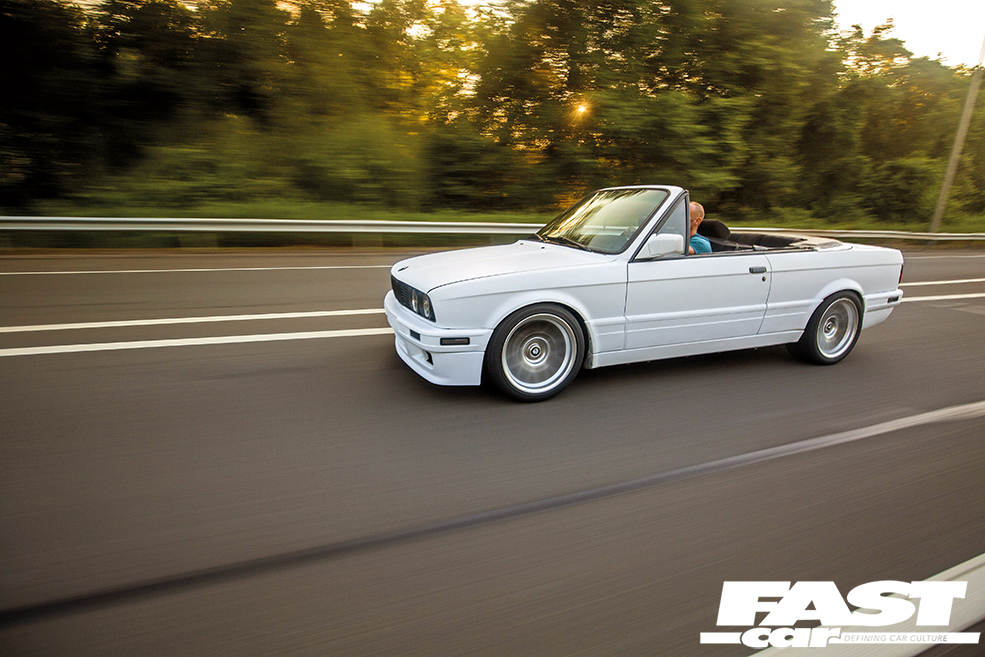
Obviously, making a Tesla-powered BMW E30 work is not a casual undertaking so regardless of how you might feel about electric power, it’s clear that Jon is definitely a gearhead (if not a pure petrolhead), and he’s clearly a BMW fan too based on his mention of previous E30s, so let’s see what makes the man with the silent 3 Series tick. “I’ve been into BMWs since around 2004 when I got my first,” Jon tells us. “I’ve had BMWs ever since, mostly E30s, and an E28. They’re just a solid, well-engineered chassis that are generally easy to work on. Back in 2004, I was doing fabrication work for a local CT company doing turbo kits. There was a 130k-mile Alpine white ’89 325i sitting out back that nobody was doing anything with. I took possession of that one week instead of a paycheck,” he grins. “That particular car went through some DIY ITBs based off GSXR600 throttle bodies, Megasquirt, and then finally served as a development car for various turbo manifolds when I owned 666 Fabrication from 2005-2012. You may recognize the name as a few PBMW feature cars of the years were equipped with my products,” he smiles and that’s certainly one way to get acquainted with the brand. Jon mentioned considering slapping a turbo on his LS-swapped E30 and there’s a very good reason for referencing that particular modification; “Most recently, I had built a ’95 M3 – Alpine white of course – with a Chevy 5.3 LS and 76mm Precision turbo. The car made around 700whp at 23 psi and went 10.4@136mph at 3550lbs race weight,” so if there was ever any doubt at all, Jon likes modding.

With his turbo LS E36 M3 sold to fund the Tesla-powered BMW E30, we must now move on from the ‘Why?’ to the ‘How?’ because while carrying out engine swaps is something we all have knowledge of to some degree at least, something like this is a rather different prospect. “Once the LS was removed, I repainted the (former?) engine bay while I had the opportunity. As all work was carried out in a 400sq ft one-car garage, I decided to do almost all the fabrication work by 3D-modelling the parts in Fusion 360 and then having them laser cut by SendCutSend out of Reno Nevada. I would upload a file right to the webshop and it would usually be cut and shipped a few hours later. The battery cable routing is also guided by cable clamps 3D-printed in PETG and some custom grommets were also designed using a flexible 3D filament called TPU. The first thing that was done to mount the motor was to remove the spare tyre well and trim a stamped steel crossmember to make room. These are the only things that had to be cut from the car to do the swap. Once the motor was squared up and mounts drawn, it was then just a matter of finding space and mounting the rest of the components. Once all the hardware was mounted, it was on to working, cooling and driving! Yup, pretty simple really,” he grins.
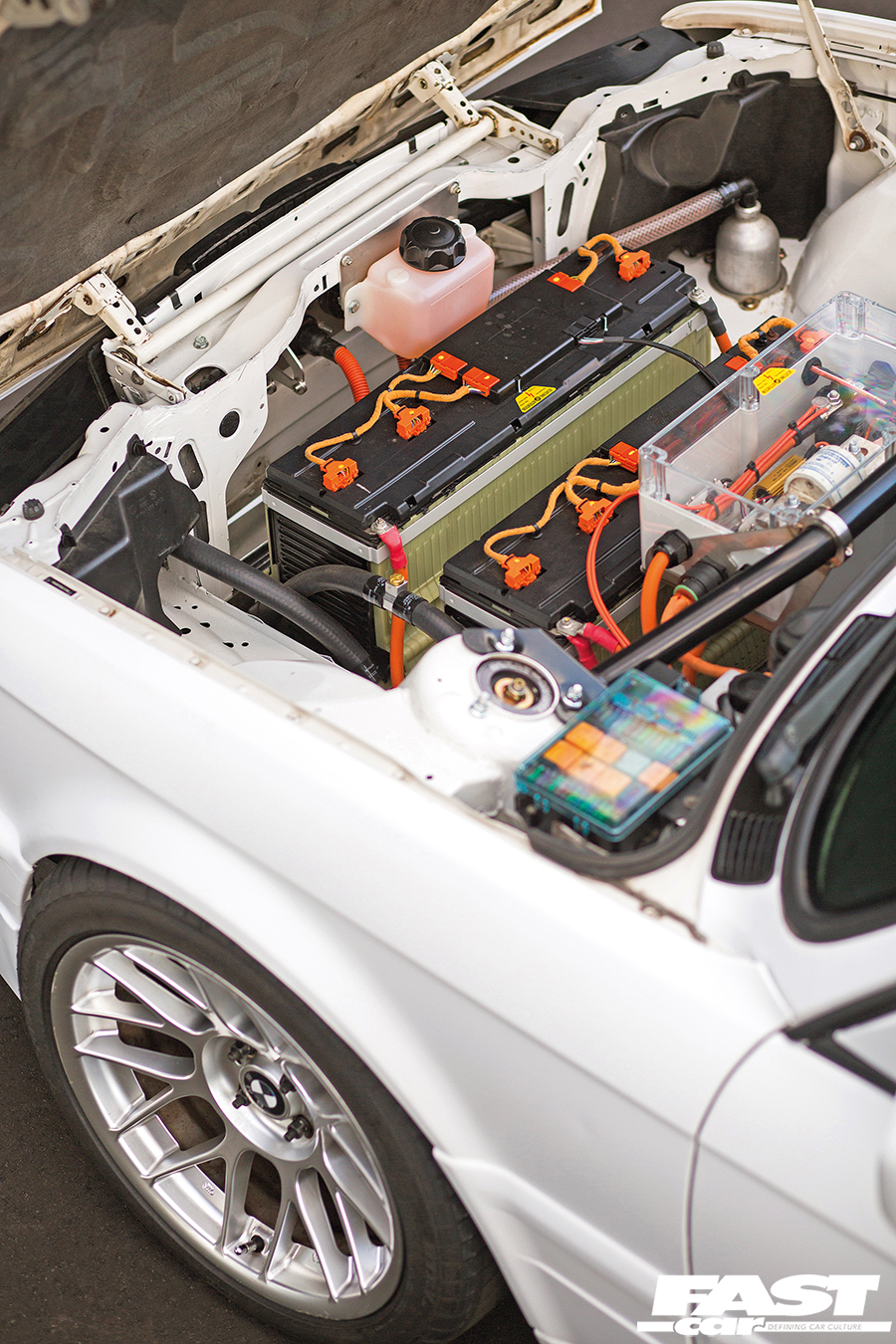
Pop the bonnet (and the boot) and you’ll find a whole load of batteries while under the car sits the electric motor itself, so how does it all work? “The motor is a Tesla Model S 85 large drive unit with an open-source logic board controller by Damien Maguire (EVBMW.com), fully programmable with regenerative braking, and a Quaife ATB differential while the throttle is managed via an E46 Hall effect drive-by-wire pedal. The Tesla ‘drive unit’ is a fully self-contained unit mounted in the rear of the car; the motor, inverter, and single-gear 9:1 transaxle all hang from the rear of the car by only three mounting points,” Jon explains. “Most parts were sourced from eBay, except the motor, which came from Electric GT in California. The motor, batteries and charger are liquid-cooled by a Davies Craig electric water pump and various aluminium and silicone hose plumbing supplied by Verocious Motorsports. Almost all the silicone hoses use Gates PowerGrip heat shrink clamps rather than traditional hose clamps – these were also sourced through Verocious and can even be used for intercooler piping in sizes up to 3”. Chevy Volt batteries were chosen due to cost and power density, meaning they are capable of discharging at 1000+ amp bursts without requiring the full weight of, say, a Tesla Model S pack. They are mounted in a manner that is 100% bolt-in, so as battery tech advances I can easily reconfigure the car to take advantages of the latest designs. I envision replacing the batteries in two years or so if nobody throws a garbage bag full of cash at me for the car,” he laughs. “The high-voltage contactors, fuse and switching are housed in the plastic enclosure mounted to the strut bar; the BMW high-voltage stickers are OE to E30 ignition coils for a semi-factory look,” Jon adds with a grin.
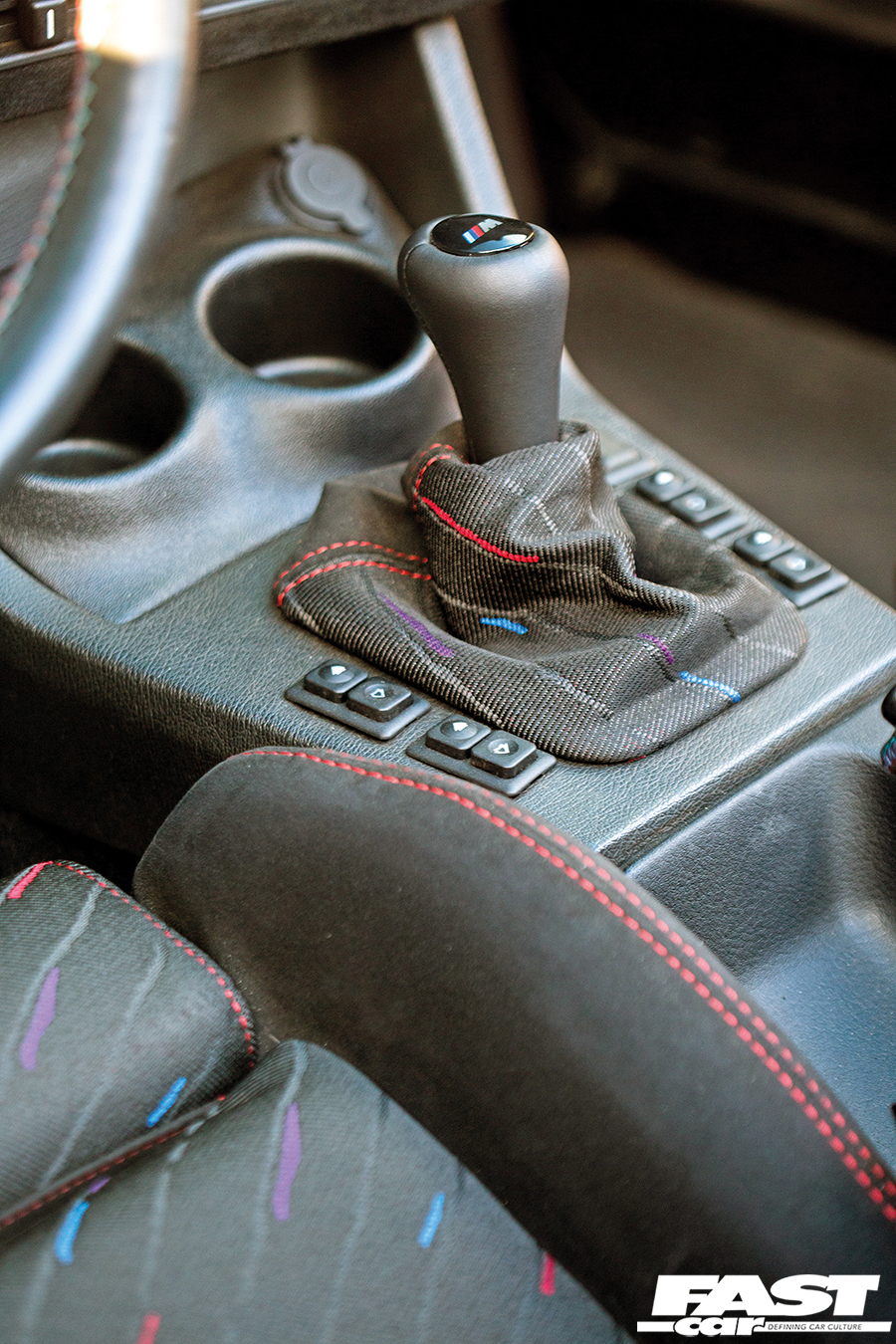
All this sounds complex but, when you break it down, the whole concept of an EV is far simpler than that of an ICE (internal combustion engine) and so while there is a lot of stuff to wrap your head around, once you’ve done that making it work isn’t that hard (relatively speaking…). “Overall the build was fairly simple; believe it or not, there were fewer wiring connections than any standalone EFI conversion I’ve done in the past,” says Jon. “In terms of power numbers, I need to get the car on a dyno, but the lowest horsepower large drive unit available is around 380hp. I’ve had it on the drag strip and based on a quarter-mile time of 11.50 seconds at 116mph with a 3150lb (1429kg) race weight that equates to approximately 410whp,” he grins. That’s a lot in an E30, around 480hp at the motor, and with electric power, you get massive, instant torque so Jon’s E30 is going to feel seriously fast out on the road. “While I do miss the sound of the LS with the lumpy cam, the Tesla motor isn’t silent; it makes its own unique spaceship-like noises that are pretty awesome in their own way. The instant torque is awesome and controllable and it makes sliding the car around effortless,” he grins. “Being my first EV, there are definitely some appealing advantages over the ICE package that came out such as no warm-up, just go wide-open throttle as soon as it’s clicked on with no ill effects; full power regardless of altitude, air temps, or humidity; no worry of getting a bad tank of gas while running high boost levels; and the convenience of ‘refuelling’ at home. The biggest downside, of course, is range; Chademo DC fast charging will allow topping off in 30 minutes or so, but the network is still growing. For the car’s intended purpose, though, this isn’t a problem,” he says and we’ve got to say that this sounds like a lot of fun and respect is due.
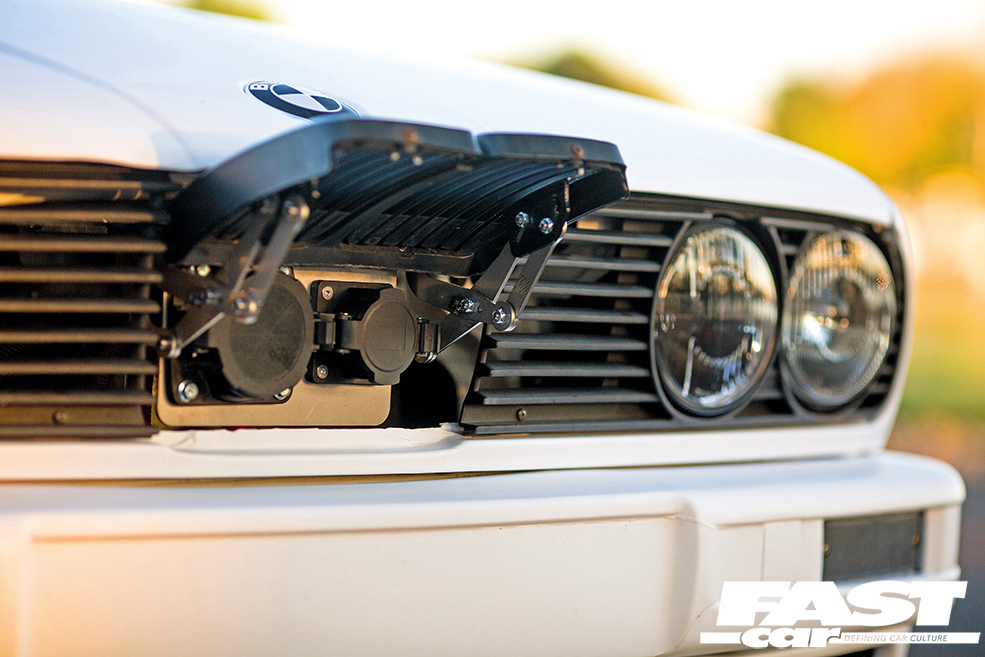
While the Tesla swap is a huge part of this build, it’s not all of the build and there’s plenty more going on here beyond all those batteries. The E30 chassis has obviously received some upgrades to better cope with all the electrics that are on board now and Jon has put in plenty of work to ensure that it handles, and handles all that power and torque. “The car retains the OE-style BMW rear suspension and subframe; the Tesla drive unit was a near-perfect fit for this setup,” he explains. “The rest of the components were chosen as a balance of budget and proven effectiveness in past builds. The front end is light enough to not need power steering and there is no need for power brakes with the regen capabilities of the motor; the motor does most of the work for stopping the car, all while feeding some power back into the batteries. The car utilises factory E30 axles that bolt up to axle drives that have had custom-machined adapters pressed and electron beam-welded modified Tesla output stubs,” which sounds suitably futuristic, but the basics are assuringly old-school. The car sits on Koni Yellow adjustable shocks partnered with Ireland Engineering coilover sleeves with 350lb front and 1000lb rear springs, Ground Control camber plates and an Ireland Engineering 25mm front anti-roll bar. On top of all that there are Condor Speed Shop bushes and a power steering pump delete kit on a Z3 1.9 rack, which results in a sharper helm with loads of steering feel. The drop delivered by that suspension setup is a sizeable one that gets this E30 sitting perfectly over the 17” APEX ARC-8s that Jon has chosen and the low offset results in a concave profile and sees the wheels sitting nice and flush with the arches for a meaty stance.
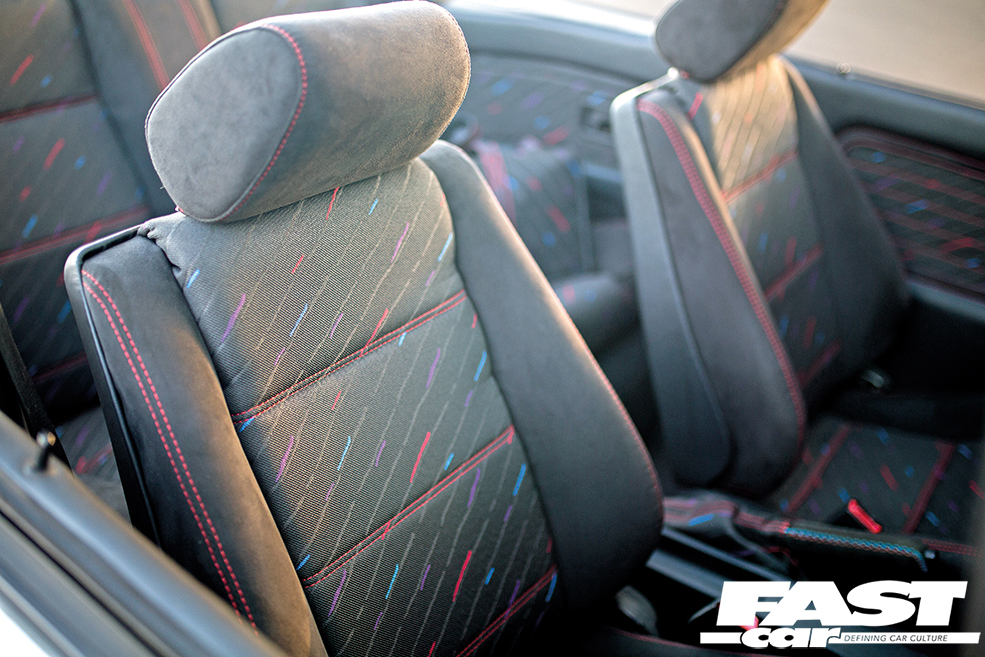
In terms of both the exterior and interior appearance, the vibe is OE and the overall impression you get is one of everything being very clean. Jon has done nothing to mess with the original aesthetics, letting those classic lines shine and just enhancing the monochrome aspect of the exterior. “I’ve always been one for subdued styling,” he tells us. “The factory M Tech 2 kit can’t be much improved upon. Mix that with some meaty tyres and it’s a timeless look. I did wrap the car in matt white vinyl as the paint had seen better days with so many daily driven miles; this was my first time wrapping anything and I made it a bit difficult for myself doing it in a 40°F (4°C) garage – eventually, it will receive a full repaint in fresh Alpine white,” he says. Up front, there are black kidney grilles and smoked headlights along with smoked indicators and repeaters and they are joined by a set of smoked rear lights, elements which work perfectly with the matt white bodywork, but there’s one custom mod that is neatly tucked away until it’s needed. “The flip-up grille for charging port access is my favourite mod on the car,” Jon says with a grin. “I spent way too much time on it, between designing and laser-cutting the hinge, to 3D-printing and bonding brackets to the backside of the grille. The end product was worth it and is always a crowd favourite,” he says with a smile and it’s a seriously cool and clever touch.
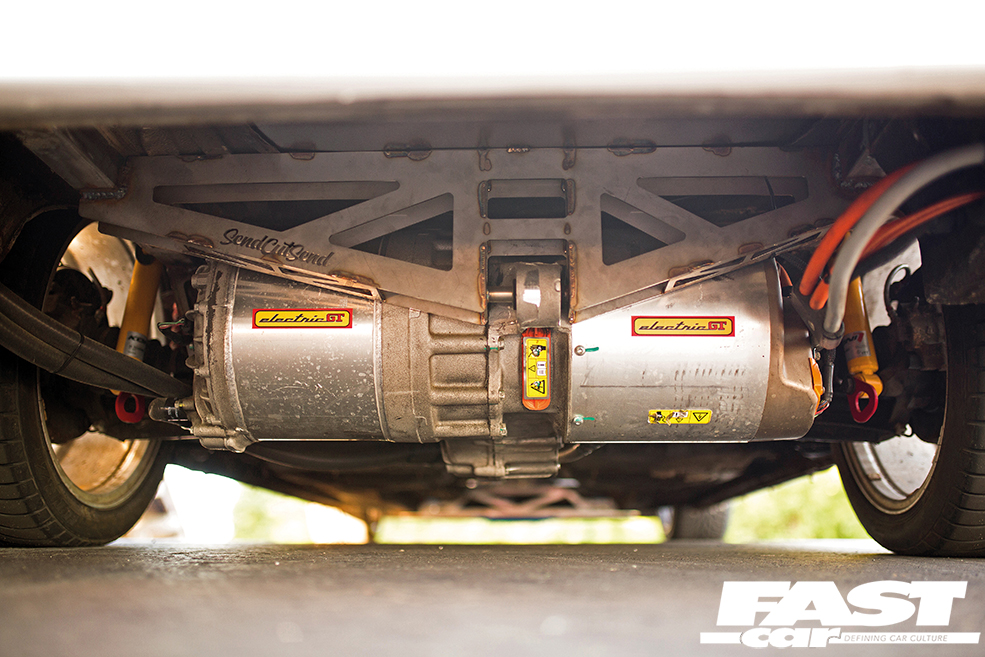
The interior, meanwhile, blends timeless BMW elements with a few neat and clever touches that have been added for the electric swap. “I’ve always loved the M-Rain cloth but never really commissioned anything custom in the past,” says Jon as we inspect his seats. “When I pulled the LS swap out of the E30 to put it up for sale, John at NineStitch NYC was interested; I mentioned I would be up for doing some bartering and that’s how the interior ultimately came about. The dash initially had some large cracks, as many E30s do. They were filled, sanded, and then the dash was flocked for a clean look that I feel goes well with the Alcantara trim of the seats. The gauge cluster is a custom one from Bavarian Restoration and features a custom tach face detailing amps x100 and a battery icon in lieu of the gas pump on the fuel gauge. I wanted the build to look clean, as though it could have come from the factory like this. It is the reason I did not want any flashy LCD touch-screens or things that would take away from the classic layout,” he explains and we love what he’s done with the interior. The flocked dash looks fantastic, as they always do, the M-Rain cloth is gorgeous and it extends far beyond just the seats, upholstering the handbrake and gear selector gaiters along with the doorcards, and there’ll find red cloth door pulls, which are a seriously cool touch. What we love most about the interior is the fact that, at first glance, it all appears completely stock and original, and you only notice those clever little EV-related touches when you start looking more closely.
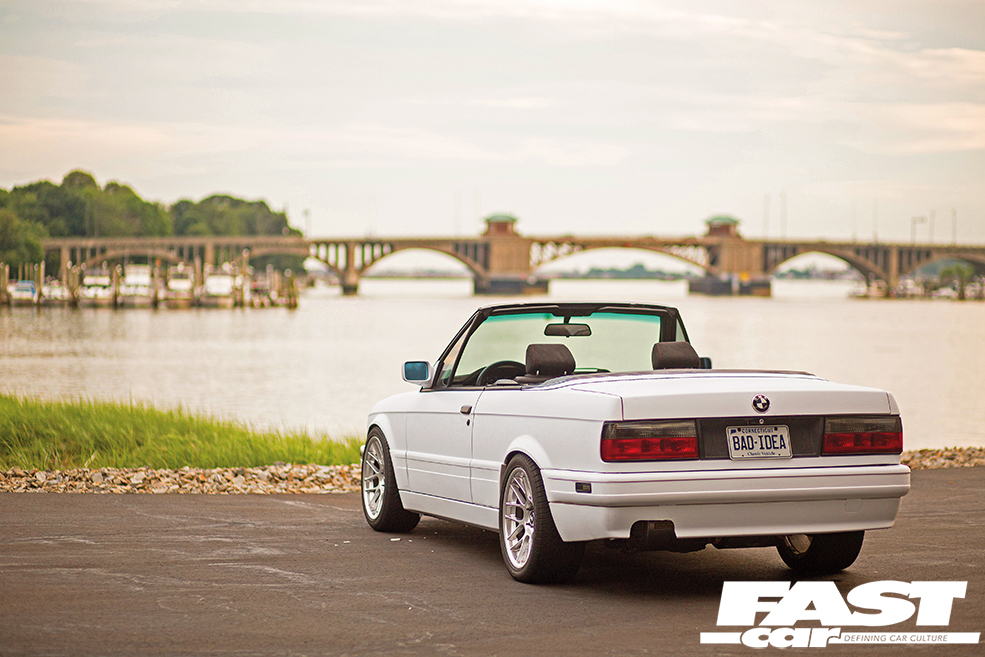
Considering the amount of work that’s gone into this build, the fact that it took Jon just five months to complete is extremely impressive, as is the fact that the car looks so original and as a result – aside from the lack of noise – there’s no way to tell what’s been done. While Jon approached the project exactly as he wanted to and built the Tesla-powered BMW E30 exactly how he envisaged it, his mind is not the sort to just chill and he’s got plenty more planned for his EV30. “Future plans for the car are to explore its potential in various motorsport arenas and besides the drag strip, I would also like to do some circuit days and perhaps do some casual drifting. Driving the car is a ton of fun: it’s definitely much faster than the LS swap that came out. It’s not face-numbing, dual-motor, P100D Ludicrous mode fast, but it’s perfect for tearing up tyres and pushing passengers back into the seat,” he grins and that sounds plenty fast to us. As for what the future holds for Jon’s garage, it’s no surprise to learn that it’s going to be electric; “I’d like to build another Bavarian EV, but something super-light with dual-motors for AWD,” he says with a smile. “I had initially considered doing an AWD setup in the E30 but decided against it as I did not want to cut it up to weld iX strut towers in. I’m a turbo LS V8 guy at heart, but this EV stuff is pretty cool. It doesn’t have to be boring or slow,” he adds and hearing that is really reassuring. A brave new world electric motoring may be, but if an EV can excite a V8-loving petrolhead, then we’re here for it.
Tech Spec: Tesla-powered BMW E30
“Engine” & Transmission
Tesla Model S 85 large drive unit with open-source logic board controller by Damien Maguire, fully programmable with regen braking, dual 400V DC Chevy Volt lithium battery packs for 32kwh/approx. 100 miles of range, Chevy Volt DC/DC converter, Davies Craig electric water pump for motor, batteries and charger cooling, Chase Bays brake booster delete kit. Single-gear 9:1 transaxle, Quaife ATB differential
Power:
Approx. 410whp
Chassis:
8.5×17” ET20 (front and rear) APEX ARC-8 wheels with 235/40 (front) and 255/40 (rear) tyres, Koni Yellow adjustable shocks, Ireland Engineering coilover sleeves with 350lb (front) and 1000lb (rear) springs, Ground Control camber plates, Ireland Engineering 25mm front anti-roll bar, Condor Speed Shop bushes, power steering pump delete kit with Z3 1.9 steering rack
Exterior:
Matt white wrap, M Tech 2 kit, J1772 and Chademo DC fast charging ports located behind flip-up grille with custom-designed hinge system, black kidney grilles, smoked headlights, indicators, repeaters and rear lights
Interior:
M-Rain seats, doorcards and gaiters by NineStitch NYC with fabric by ASC Fabrics, flocked dash, custom-designed forward-neutral-reverse switch gear selector, red cloth door pulls, Bavarian Restoration custom gauge cluster with amps x100 tachometer and battery charge gauge

